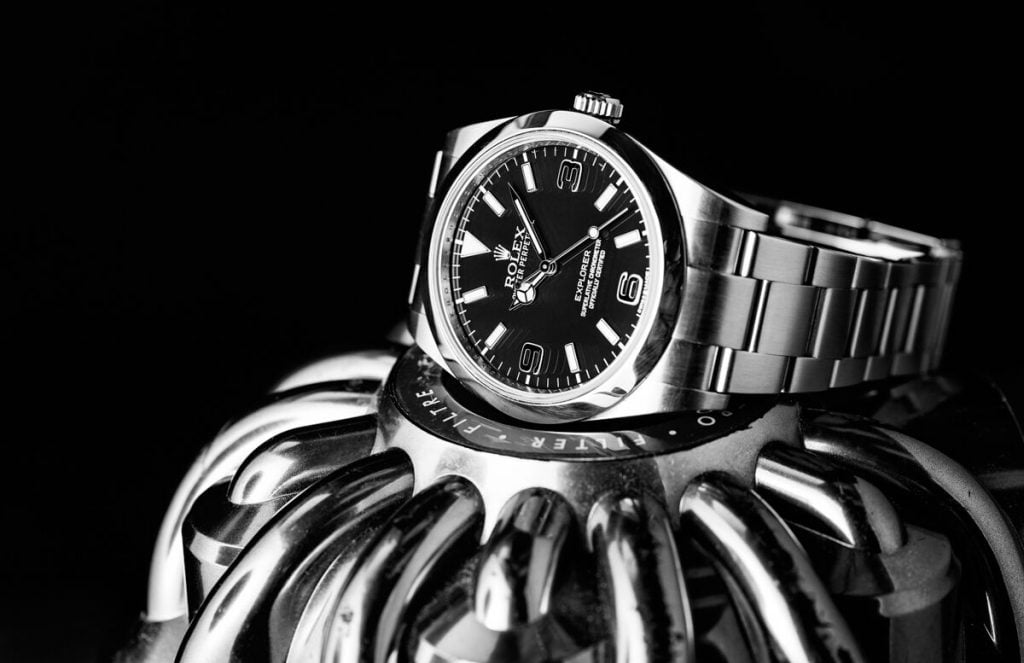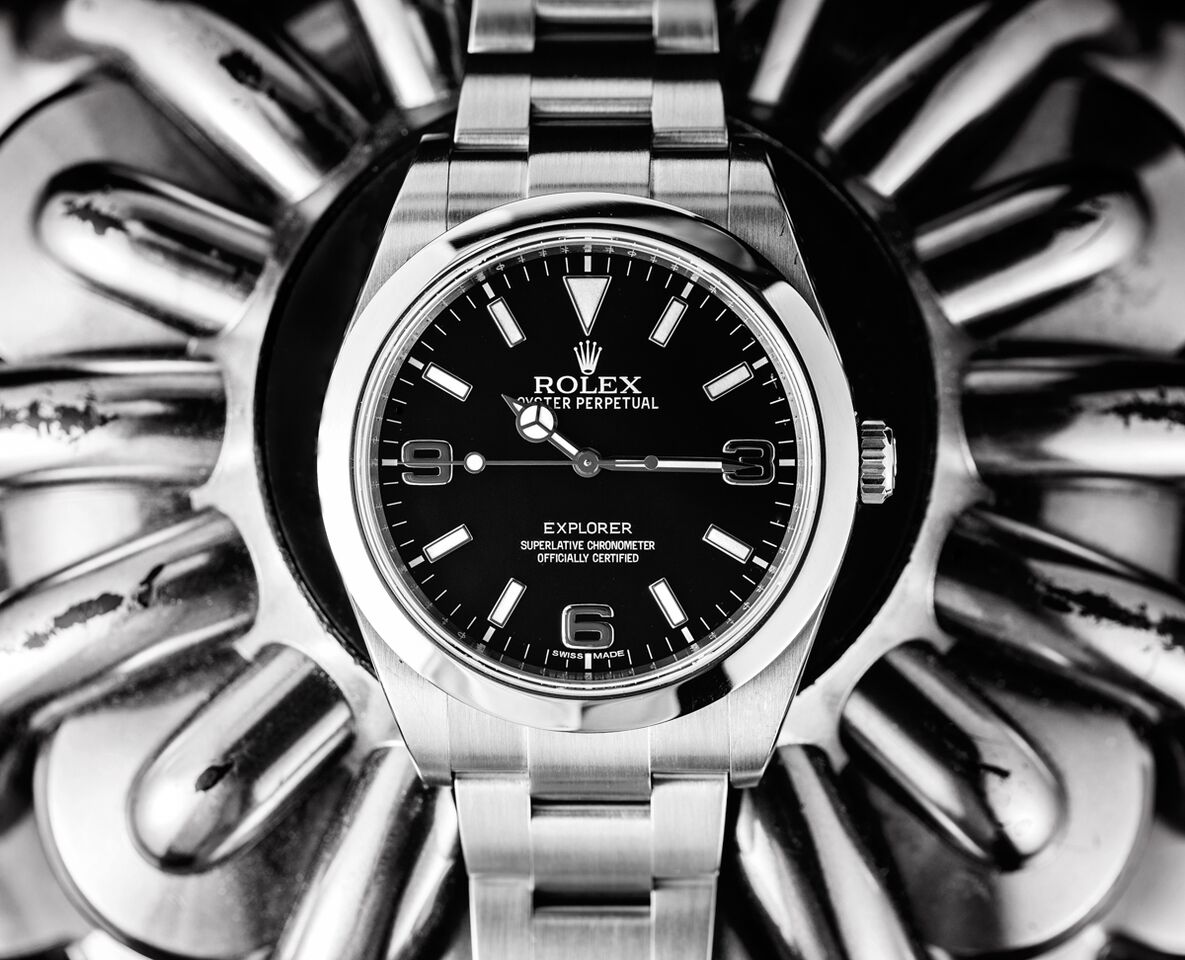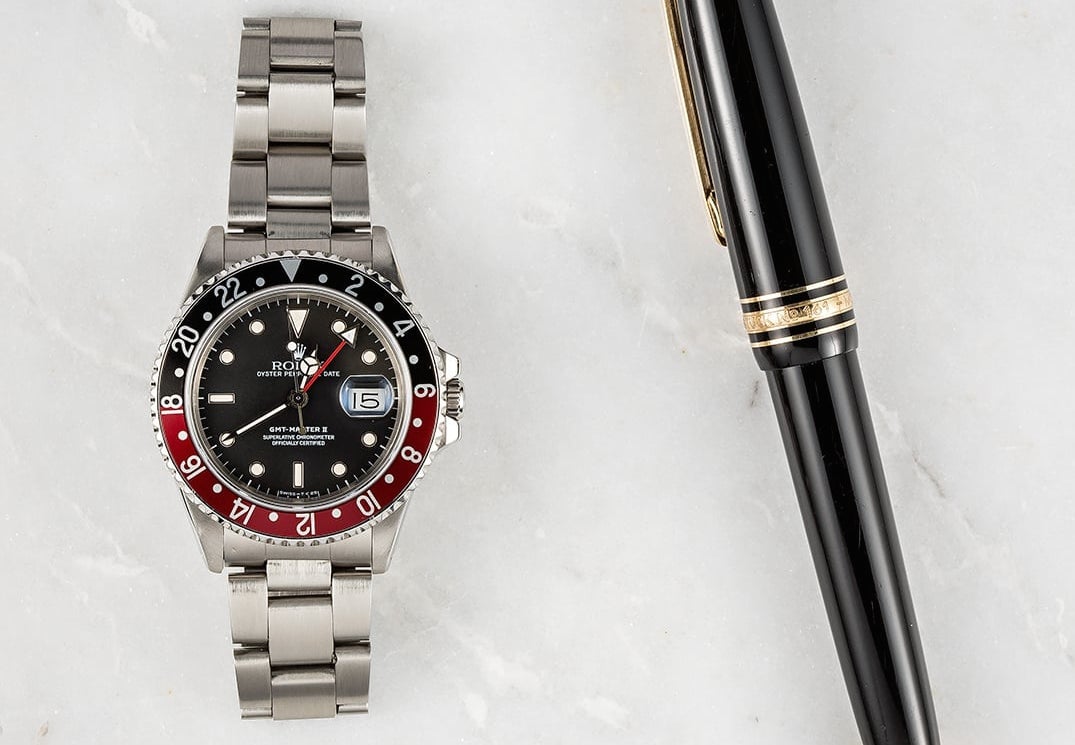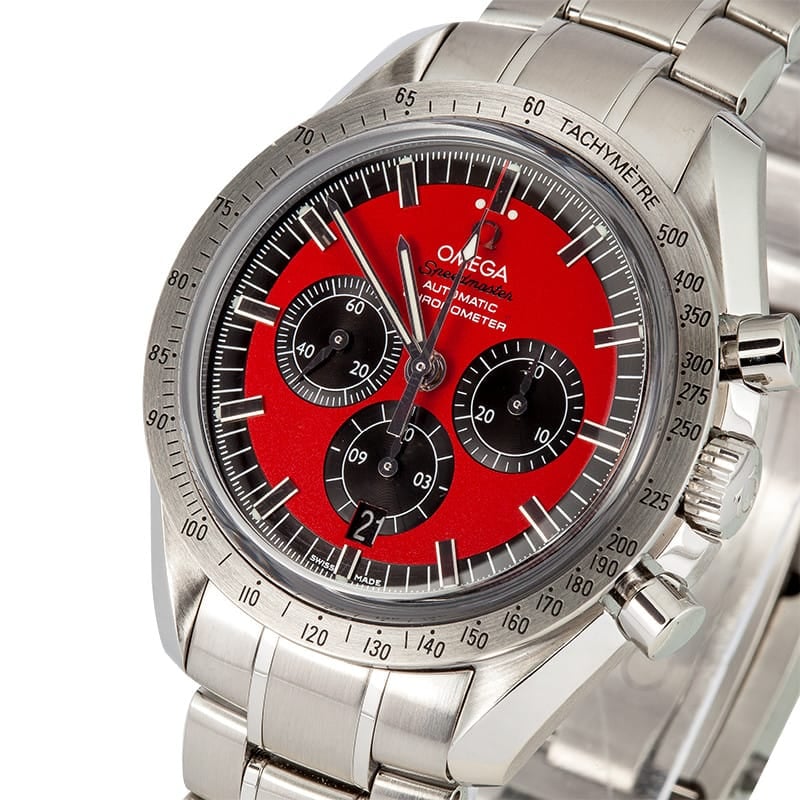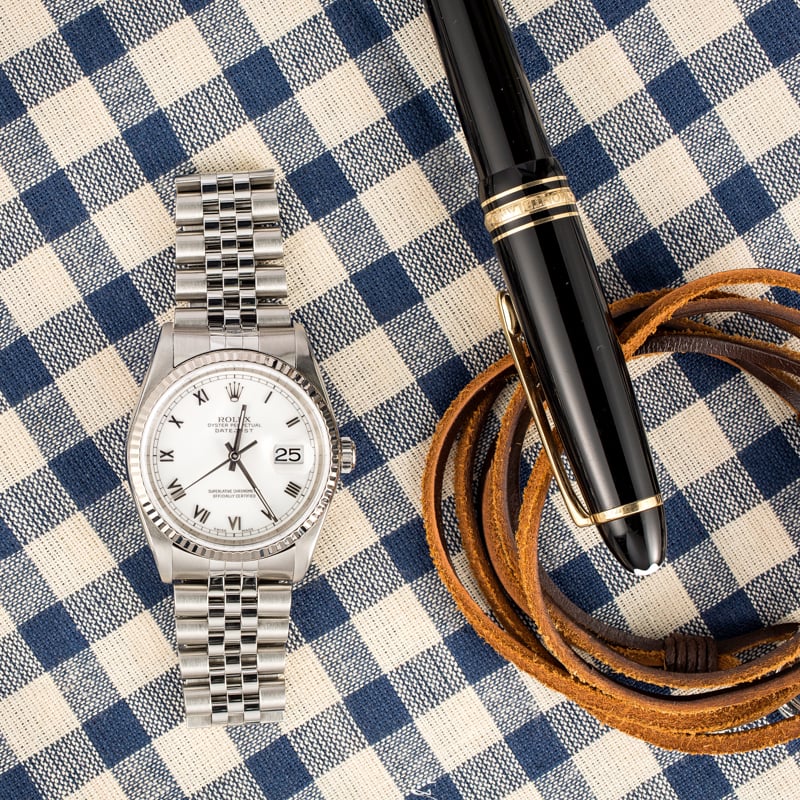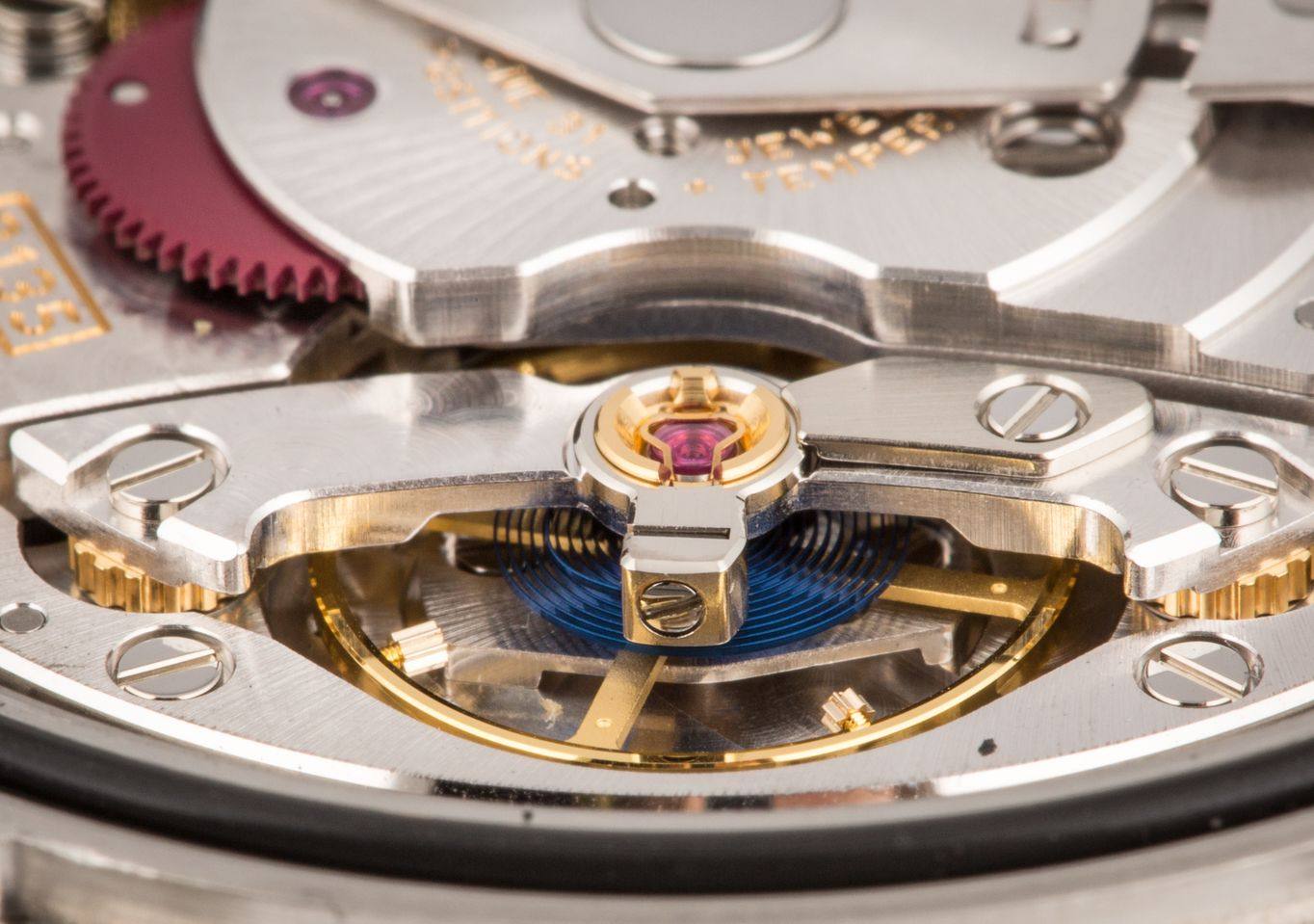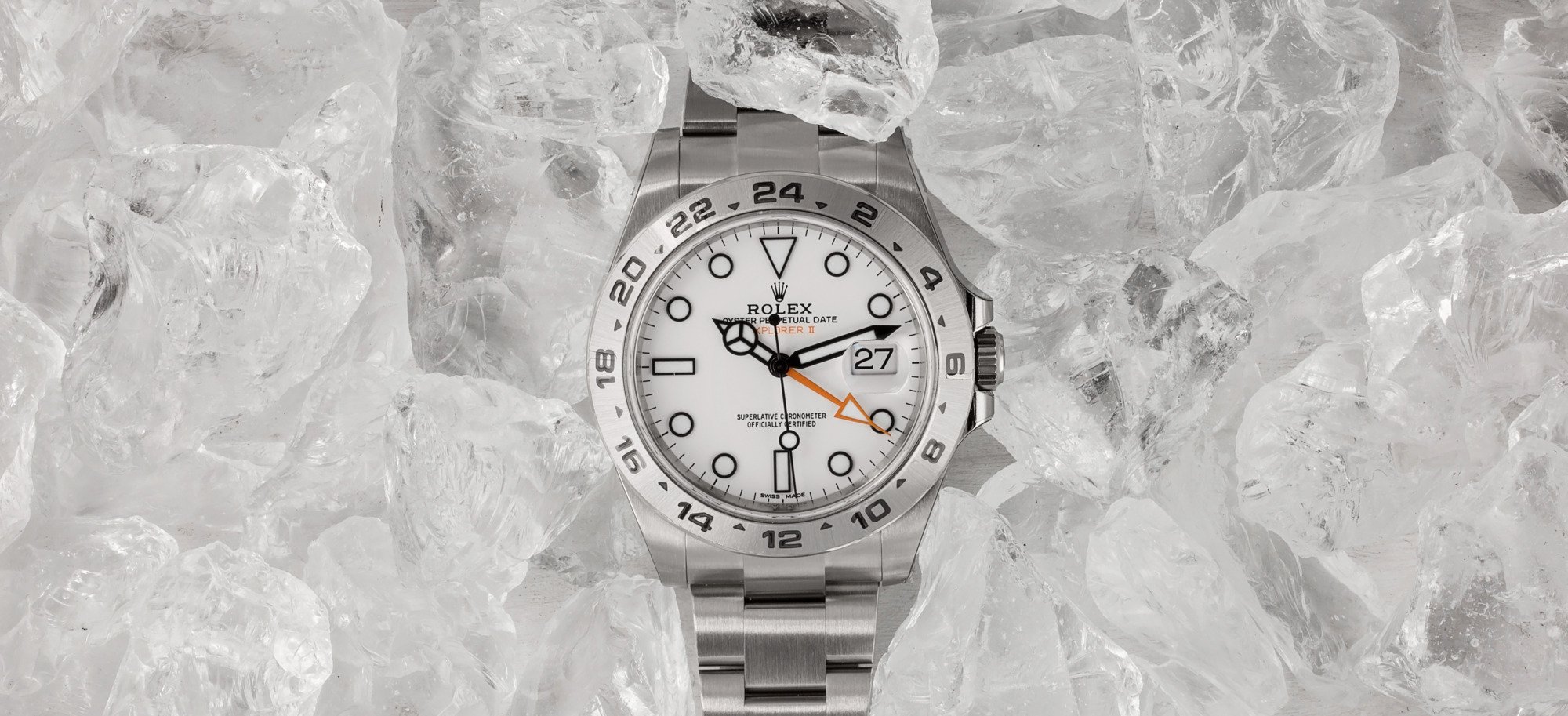The evolution of the Rolex Explorer
The Rolex Oyster Perpetual Explorer is the brand’s most understated sports watch, often flying under the radar. However, with its rich history and very wearable look, the Explorer is a Rolex watch that shouldn’t be overlooked. The Explorer’s official story famously takes shape with Sir Edmund Hillary and Tenzing Norgay’s pioneering ascent to Mount Everest in 1953. To commemorate the feat – and to remind people that Rolex Oyster Perpetual watches were worn during that expedition – Rolex released the Oyster Perpetual Explorer that same year.
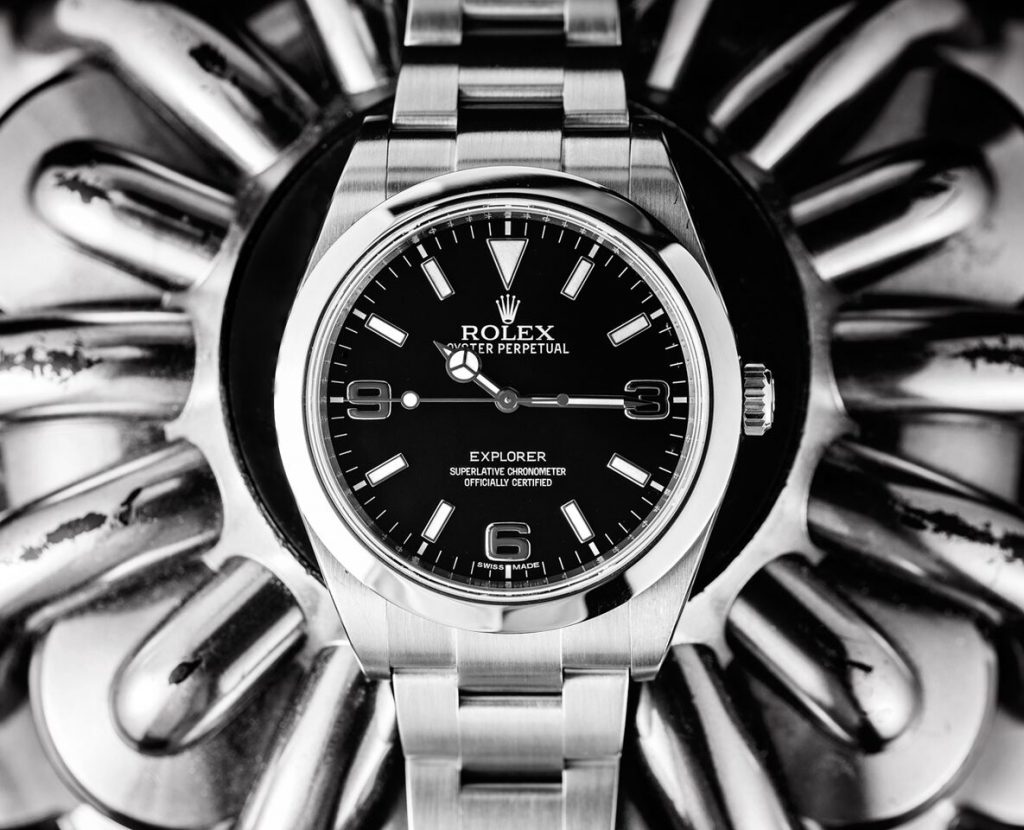
4 Rolex Explorer References
The Explorer story continues to today and here we take a look at four key references dating back from an early Explorer ref. 6610 to the current Explorer ref. 214270 and some in between to examine the model’s beginnings, evolution, and present-day status.
Rolex Explorer ref. 6610
The vintage Rolex Explorer ref. 6610 was first presented in 1959 as the replacement of the Explorer ref. 6150. It features a stainless steel Oyster case measuring 36mm in diameter and a black gilt dial. On the dial we see the upside-down triangle, baton hour markers, and 3,6, and 9 numerals configuration that is still characteristic of the Rolex Explorer today. The Mercedes-style hands on the vintage Explorer ref. 6610 is also something we see on contemporary versions of the Explorer. Something interesting on the note on this particular example is the waterproof indication (50m) printed in red right under the “EXPLORER” label. As an early version of the Explorer with a short production span, the ref. 6610 is a rare example of a vintage Rolex watch.
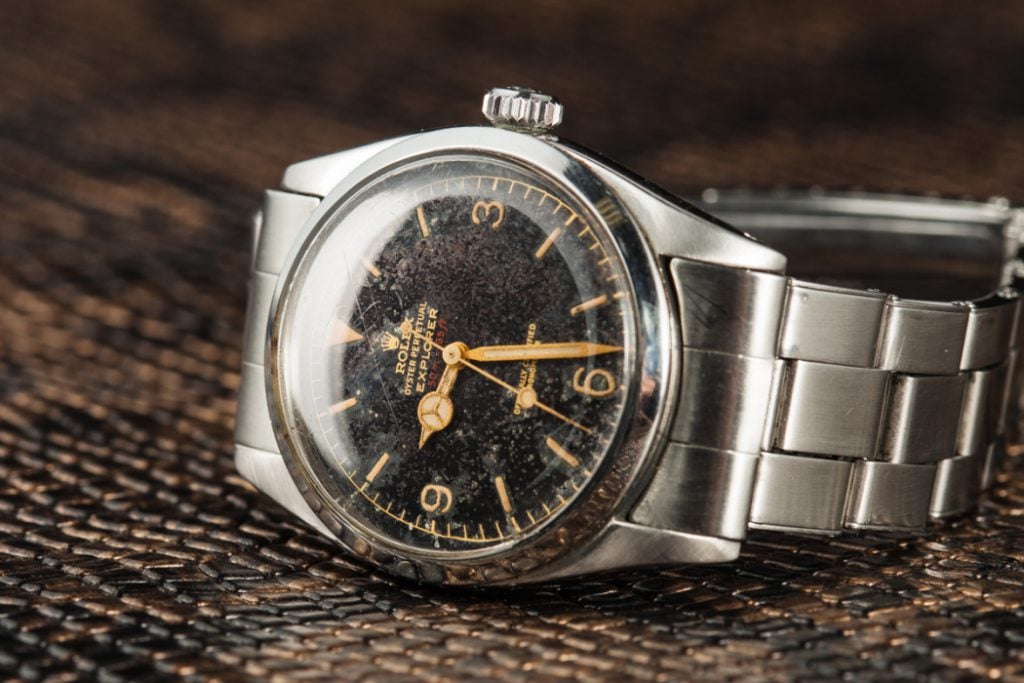
Rolex Explorer ref. 1016
First introduced in 1963, the Rolex Explorer. Ref. 1016 had an incredibly long production run until 1989. With its introduction came a new caliber — the Caliber 1560 — and increased water resistance to 100m. In the mid-1970s the ref. 1016’s movement was replaced with the Caliber 1570, which included the hacking feature. The hacking feature meant that the seconds hand stopped when the crown was pulled out all the way for a more precise time setting. Other improvements to the Explorer ref. 1016 over its over 25-year manufacturing run included solid links to the Oyster bracelet and the use of tritium rather than radium for the watch’s luminous accents.
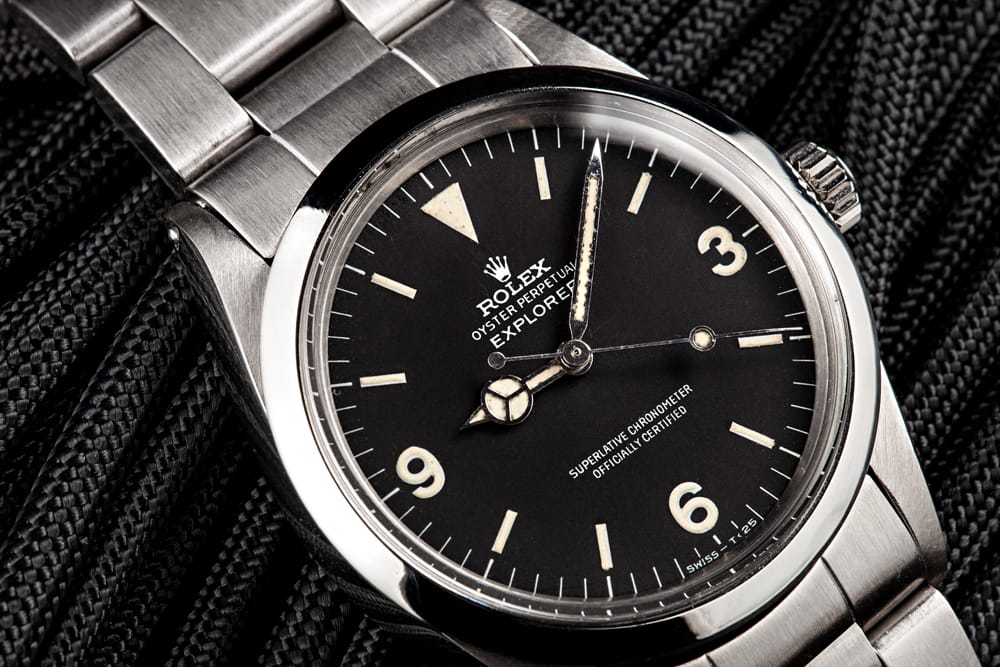
Rolex Explorer ref. 14270
The debut of the Rolex Explorer ref. 14270 at the end of the 1980s brought some significant changes to the Explorer line including replacing the previous acrylic crystal with scratch-proof sapphire crystal and opting for a lacquered dial rather than a matte one. Furthermore, the dial took on a much more modern approach with the applied indexes with 18k white gold surrounds. Powering the ref. 14270 is the Caliber 3000 and both the reference and caliber were replaced in 2001 with the ref. 114270 equipped with the Caliber 3130 in 2001.
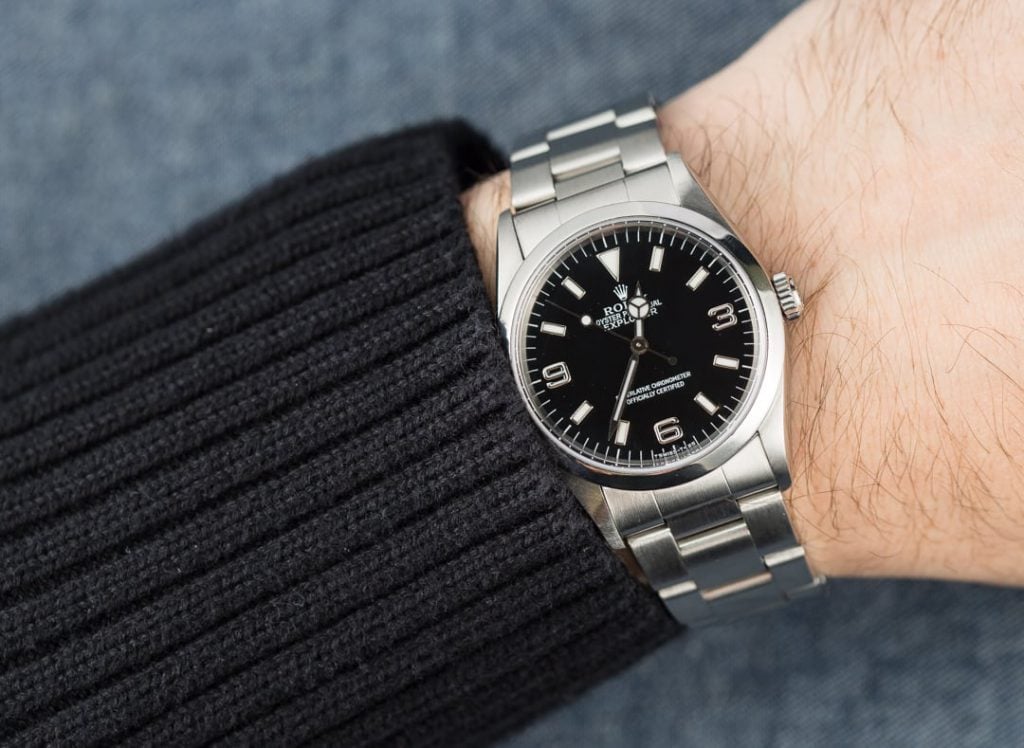
Rolex Explorer ref. 214270
The most current reference of the Rolex Explorer is the ref. 214270 that was first unveiled in 2010. This particular Explorer ushered in the biggest change to date — the increase in size. The ref. Explorer ref. 214270 sports a 39mm Oyster case instead of the traditional 36mm, which is more in line with today’s demand for larger watches. Also new to the modern-day Explorer was the addition of the Caliber 3132. Aside from the body and engine updates, the face was also given a lift. The characteristic 3, 6, and 9 numerals are no longer luminescent since they are entirely fashioned from 18k white gold and the “EXPLORER” label moved from below 12 o’clock to above 6 o’clock. Interestingly, Rolex received quite a bit of backlash for the new design, specifically that the minute hand was much too short for the new size of the Explorer. So six years later, in 2016, Rolex revamped the ref. 214270 to give it better proportioned center hands, as well as making the 3, 6, and 9 numerals luminescent again. Since there are two distinct versions of the Explorer ref. 214270, perhaps they should be referred to as “Mark I” and “Mark II” dials to avoid confusion.
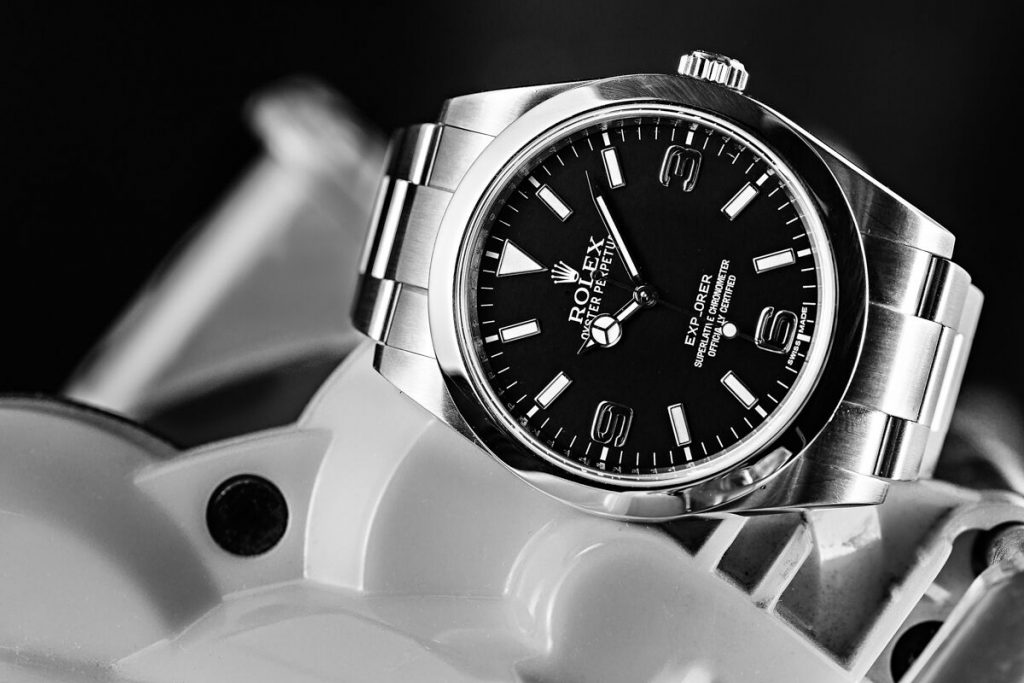
Looking at these four key references of the Rolex Explorer that spanned five decades gives a clear design and technical evolution of the brand’s most discreet sports watch. Although the most contemporary version of the Explorer is unquestionably modern and sleek, it still bears the fundamental aesthetics of its vintage ancestors. And that is something that Rolex has perfected – evolution rather than revolution.
